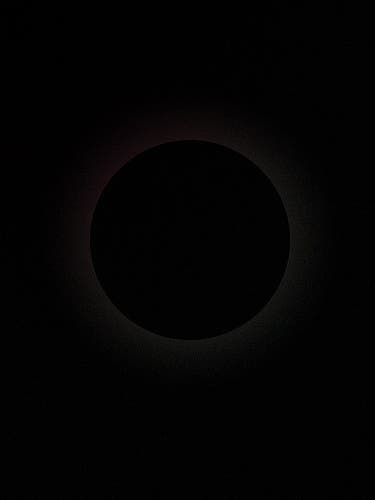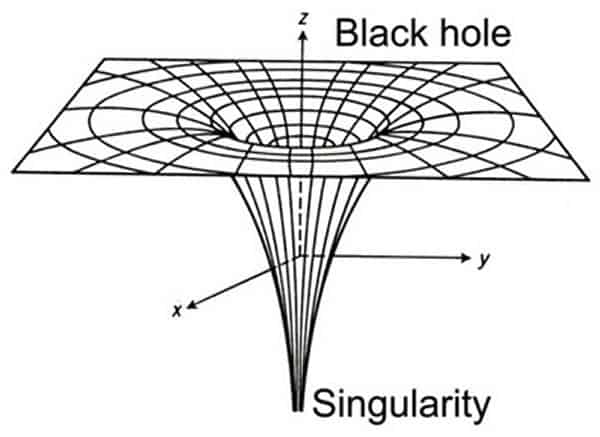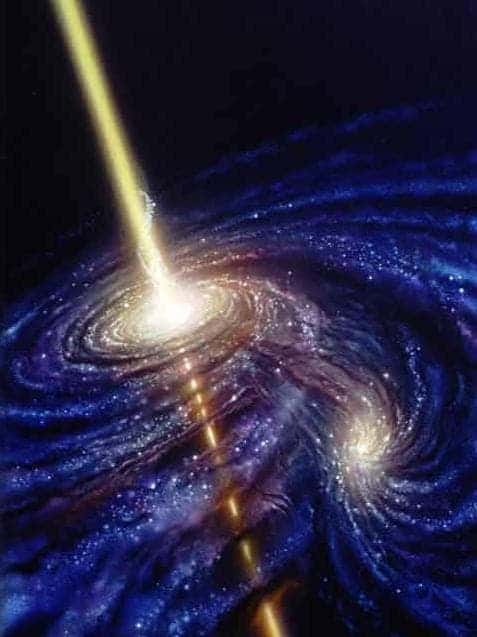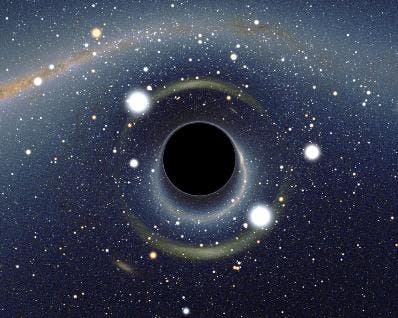Black holes are some of the most interesting and puzzling phenomena we have encountered so far; everybody has heard of them, from movies or books or whatever, but there are many misconceptions or just things most people don’t know about them, so we’re going to take a journey to the “bowels” of a black hole. I won’t get into the hardcore physics here, just explain how a black hole is formed, what it is, and other facts you might find interesting.
The idea of such a thing goes from before 1800, when geologist John Michell wrote a letter Henry Cavendish in 1783, but it wasn’t until Albert Einstein developed his theory of general relativity that it could be (at least somewhat) understood. Black holes are the final point of the evolution of some stars; stars that are generally 10-15 times bigger than the Sun sometimes undergo a supernova explosion, which will leave behind a fairly massive stellar “left overs” that have already been burned out. Without any force to work against the gravitational pull, the remnant material will collapse on itself and the star will collapse to the point of zero volume and infinite density called singularity (since density is mass/volume) and it will create an undetectable surface which marks the event horizon, or the point of no return. If something goes past that point, no matter what it is, it won’t be able to escape the gravitational pull. It is so strong, that even light cannot escape it – hence the term black hole.
This property makes it invisible to the eye, but it can be studied by analyzing the way it interacts with other matter, especially from a gravitational point of view – which requires a quick word about gravity. From the classic, or Newtonian point of view, gravity is a force in which two bodies with mass attract each other. However, from Einstein’s modern relativistic point of view, gravitation is described as an effect of the spacetime curvature instead of a force, a curvature caused by the mass of the bodies. So gravity and time are bound together – if we were to measure time closer to a black hole, we would find that time would pass much slower, and if you were to measure time in the center of the black hole, you would find it would not pass at all.
As I explained above, in the center of the black hole there lies a gravitational singularity, a region where the spacetime curvature becomes infinite. That region can be thought of as zero volume and infinite density. Any thing that falls into the singularity will be ripped apart and its mass will be added to that of the black hole. But a black hole isn’t a demonic vacuum cleaner that slowly sucks anything and everything, no matter the distance. If for example we were to replace the Sun with a black hole of exactly the same mass, the Earth, as well as the whole Solar System would move exactly the same; for an outside observer, this would be pretty funny, seeing a whole solar system revolve around… nothing (nothing visible, that is). If we were to speak about temperatures, it would be an entirely different problem, but the gravitational effect would be the same, despite the black hole having a radius of only a few tens of kilometers.
The closes black hole from us is no less than 1.000 years away, so we probably don’t have anything to worry about, but then again, at the center of our galaxy, the Milky Way, there is asupermassive blackhole with a mass 4.000.000 times bigger than the Sun. There is good reason to believe that these supermassive black holes are at the center of most, if not all, galaxies, and it’s estimated that they can have a mass a few billion times bigger than that of the Sun. Also, black holes do grow, basically sucking anything they can around them, and making things they cannot suck revolve around them.
During the 1970, British researchers Stephen Hawking and Roger Penrose realized that black holes and the Big Bang have very much in common. Inside the black hole there is a point of infinite curvature, which is presumably what the Universe looked like before the Big Bang, so the process of a star collapsing into a black hole is just like the Big Bang in reverse. The details surrounding this matter however become quite fuzzy. General relativity does explain how things work when space is curved, but doesn’t explain how it works when infinitely curved. Since we are talking about an indefinitely small space, the laws of quantum mechanics should be considered too, but our current understanding of quantum mechanics doesn’t work in space that is curved, let alone space that is infinitely curved. So from this point of view, quantum mechanics and general relativity are inconsistent with each other, which is just one of the reasons why studying black holes is important. Both theories predict something different will happen, given a set of conditions, so if we were to somehow find what would happen, this will show us the correct theory to apply. If we were to put it this way, quantum mechanics and general relativity are the key players in a team. But sometimes they just don’t work together at all, so there is a need for another theory to reconcile the two and smoothen things up – for example string theory.
To make things even harder to study, black holes may also be rotating, and/or electrically charged. There are only three properties that can characterize a black hole:
An interesting fact is that mathematically speaking, any general relativity equation solution is symmetric in time, basically take any solution and imagine another solution that works as the first one, but with time in reverse. If you apply this to black holes, you will get what is a white hole, and object you cannnot enter, and that can only spit things out. This is a good example of why mathematical solutions cannot exist in nature; if we define a white hole as the temporal opposite of a black hole, then the process of creating a white hole is the same as the process of destroying a black hole – which is impossible



